#31 March 1831
Text




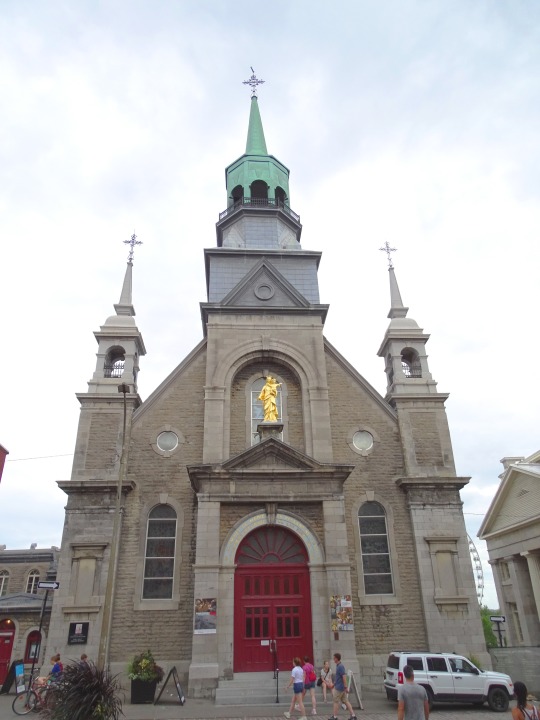

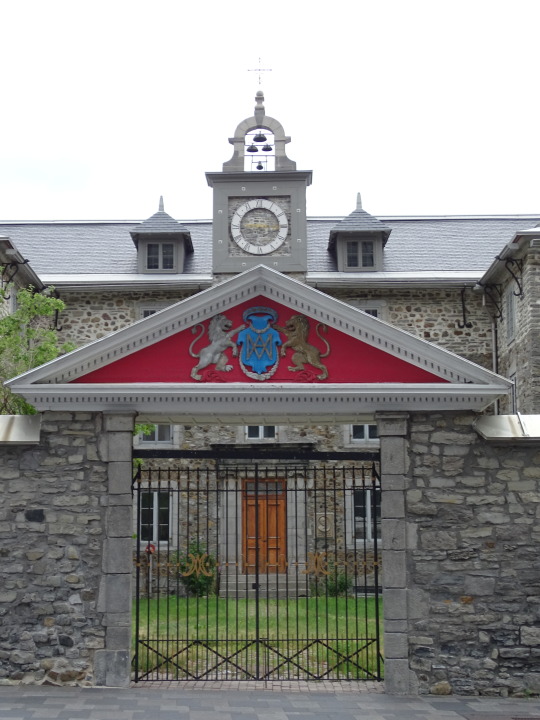




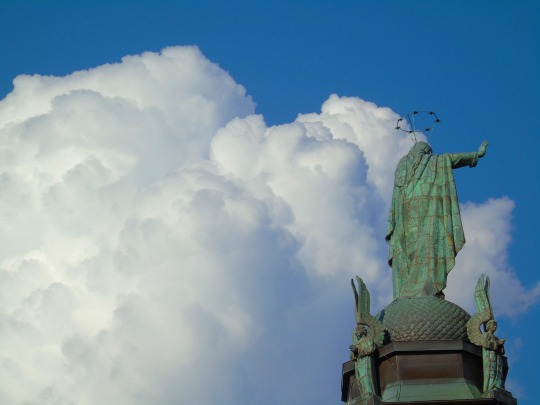
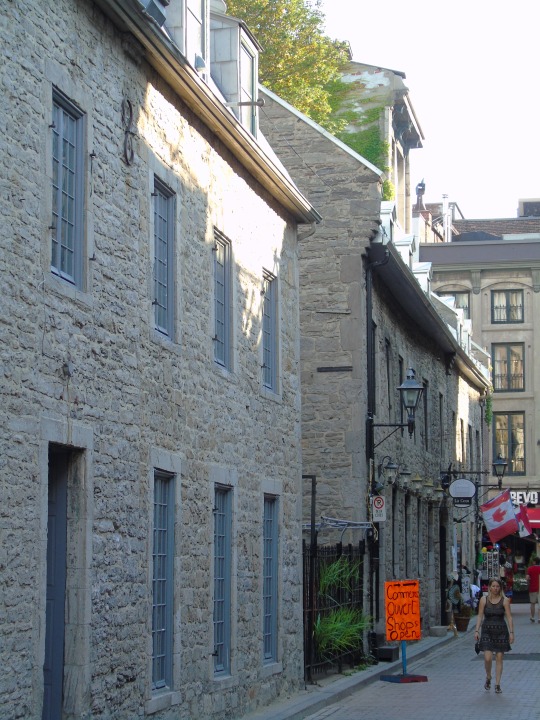
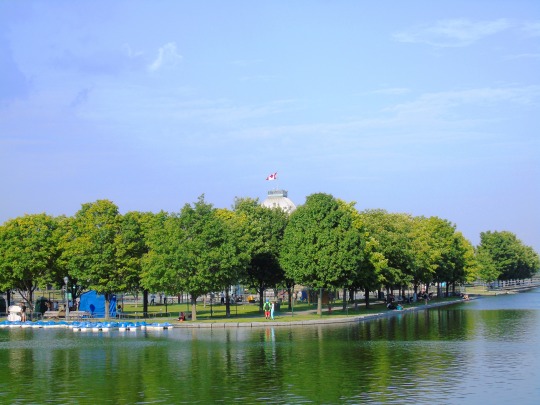
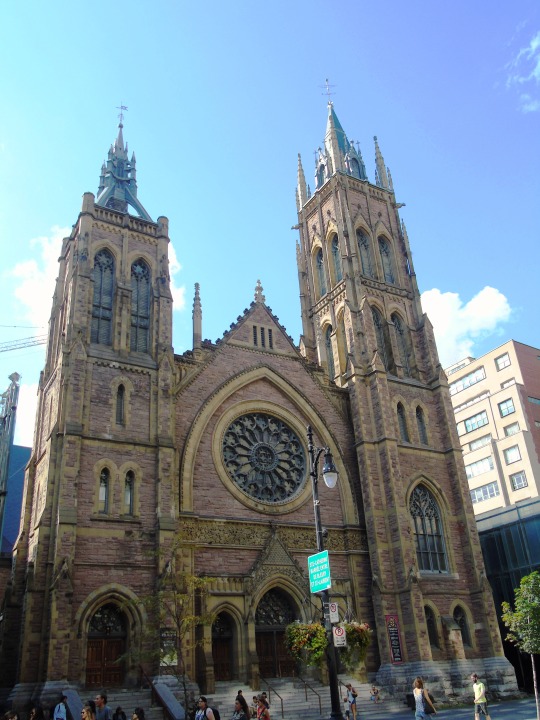
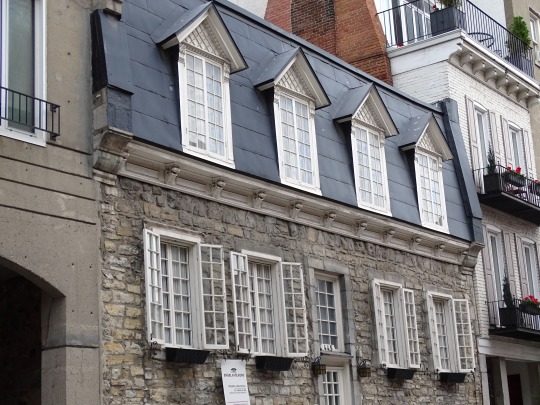


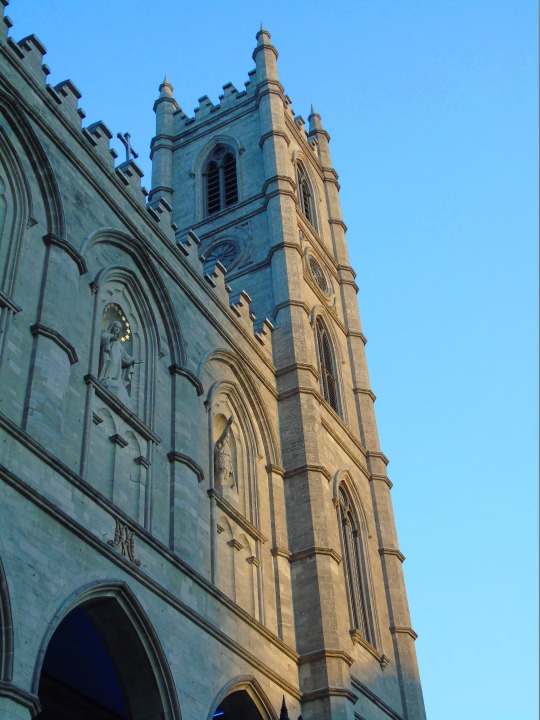

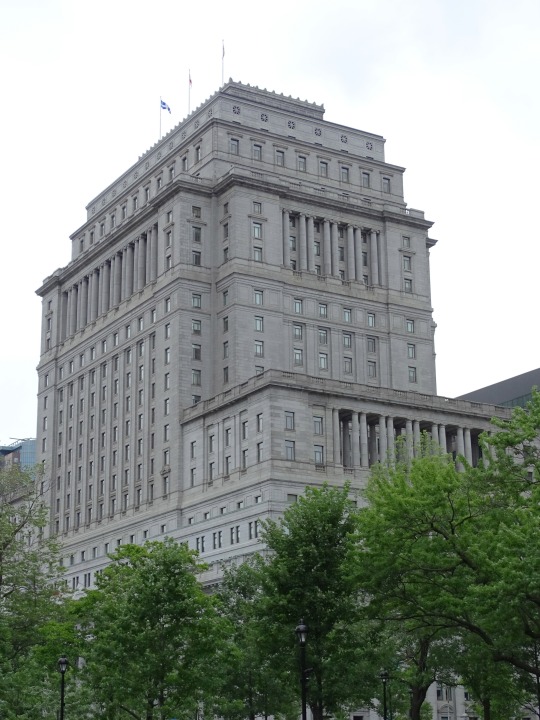
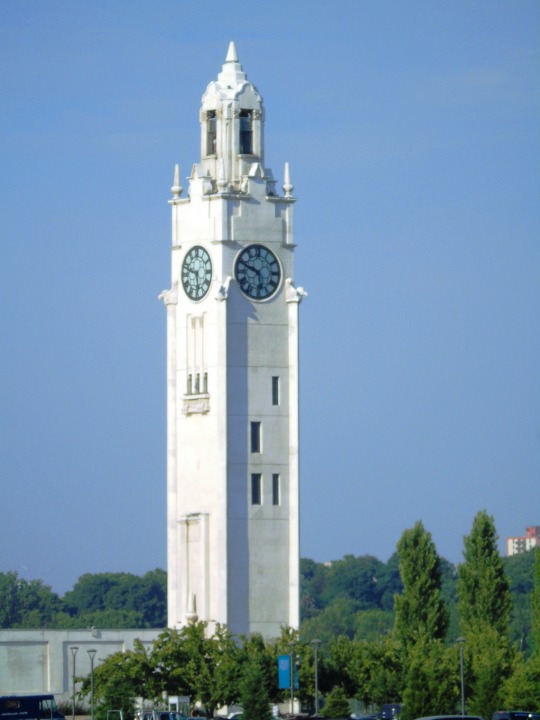

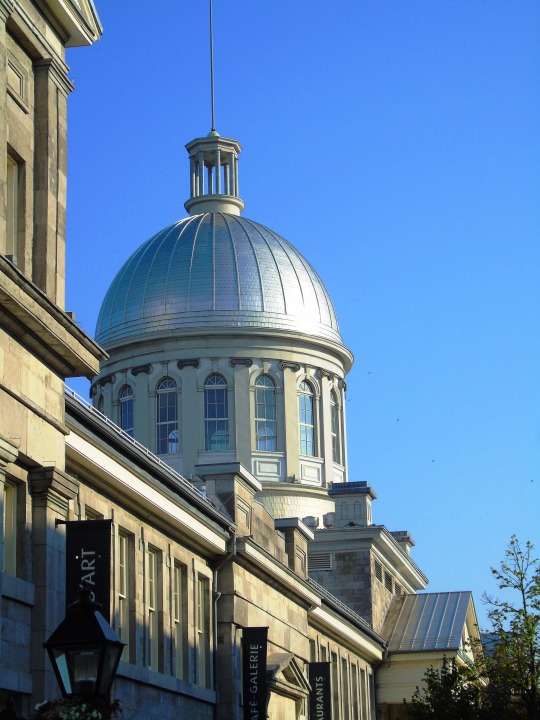

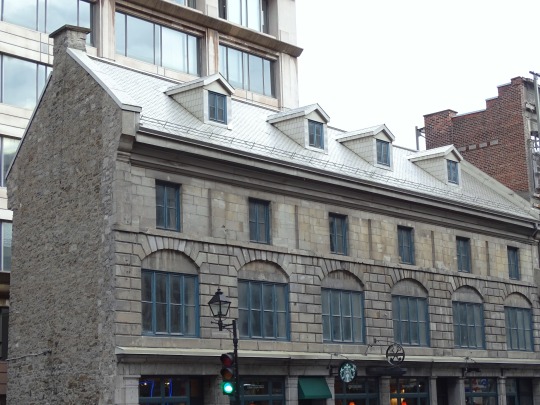


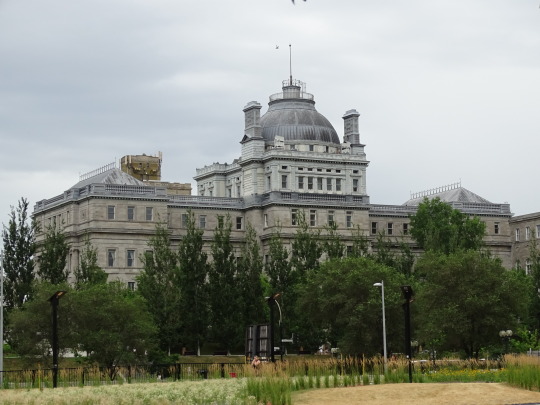

Montréal was incorporated on March 31, 1831.
#Château Ramezay#City Hall#Québec#Canada#summer 2018#2015#travel#original photography#vacation#tourist attraction#landmark#Saint-Sulpice Seminary#Paul Chomedey de Maisonneuve by Louis-Philippe Hébert#Notre-Dame Basilica#Notre-Dame-de-Bon-Secours Chapel#Bonsecours Market#Montréal#incorporated#31 March 1831#anniversary#Canadian history#cityscape#architecture
1 note
·
View note
Note
Hello, Monsieur! I'm sorry for my much questions, but the chance asking you them is simply too overwhelming and nice!
Well, I am interested about your concerts you gave during your live time. When and where - and that all - I mean. Is there a good website with a list or similar?
Good afternoon mon petit élève, never be sorry for asking questions, I enjoy answering them!
As far as I’m aware, there’s no definitive list of my concerts, but I’ve tried to remember when and where I performed during my lifetime for you. The list only includes concerts, not events such as soirées, balls or bazaars… And nor does it include the specific concert halls for it has been too long for me to recall such small details.
My concerts:
11 August 1829 Vienna
18 August 1829 Vienna
17 March 1830 Warsaw
22 March 1830 Warsaw
8 July 1830 Warsaw
11 October 1830 Warsaw
8 November 1830 Wrocław
11 June 1831 Vienna
28 August 1831 Munich
25 February 1832 Paris
20 May 1832 Paris
March 1833 Paris
3 April 1833 Paris
25 April 1833 Paris
15 December 1833 Paris
25 February 1834 Paris
14 December 1834 Paris
25 December 1834 Paris
22 February 1835 Paris
15 March 1835 Paris
4 April 1835 Paris
26 April 1835 Paris
31 March 1837 Paris
3 March 1838 Paris
12 March 1838 Paris
29 October 1839 Paris
26 April 1841 Paris
21 February 1842 Paris
15 January 1843 Paris
17 March 1843 Paris
16 February 1848 Paris
23 June 1848 London
7 July 1848 London
28 August 1848 Manchester
27 September 1848 Glasgow
4 October 1848 Edinburgh
11 notes
·
View notes
Text
Rutherford Family updated
This will combine recent posts.
Robertus Dominus DeRodyrforde
1120
Unknown
Gregory Dominus deRodyrforde
1160-1214
Unknown
Baron Hugo DeRodirforde
1190-1252
(Died in England)
Unknown
Nichol Sir deRuthirforde
1211-1283
Unknown
Nichol “Sir” de Ruthirforde
1230 West Linton, Peeblesshire, Scotland
Death 1296 Roxburghshire,Scotland
Marjorie Halliday
1240
Sir Richard D DeRuthirfurde
1270 Scotland
Death 1338 West Linton, Peeblesshire, Scotland
Married 1285 Gloucestershire,England to
Johanna De Heaton
William DeRutherfurde
1300 West Linton,Peeblesshire, Scotland
Death 1338 Roxburghshire,Scotland
Jean Douglas
Sir Knight Richard DeRutherford
1333 Roxburghshire,Scotland
Death West Linton, Peeblesshire, Scotland
June Jean Douglas
Robert O Rutherford
1362 Chatto, Roxburghshire, Scotland
Death 1436 Kelso, Roxburghshire, Scotland
Margaret Glendowlyn
1366-1450
Sir George O. Of Chatto Rutherford
1390 Chatto,Roxburghshire, Scotland
Death 6 February 1429
West Linton,Peeblesshire, Scotland
Janet Rutherfurd
1414-1432
George Rutherford
1420 Melrose,Roxburghshire, Scotland
Death 16 February 1499
Spouse Lady Catherine Lyle
1426-1498
Patrick Rutherford
1440 Lang Newton, Roxburghshire, Scotland
Death Nisbet, Roxburghshire, Scotland
Spouse Elizabeth DeHalswicle
1440-1498
John Rutherford
1480 Nisbet, Roxburghshire, Scotland
Death 1567 Nisbet, Roxburghshire, Scotland
Spouse Elizabeth Cairncross
1482-1560
John Rutherford
1530 Nisbet, Roxburghshire, Scotland
Death 1600 Nisbet, Roxburghshire, Scotland
Spouse Isabel Davidson
1540
William Rutherford
1570 Nisbet, Roxburghshire, Scotland
Death 1638 Nisbet, Roxburghshire, Scotland
Spouse Mary Jane Gibson
1576 - 1640
James Rutherford Captain (Brother of Dr. Samuel Rutherford)
1604 Nisbet, Roxburghshire, Scotland
Death 9 March 1668 Utrecht, Netherlands
Spouse Margaret Gledstaines
1600 - 1675
Samuel Rutherford Reverend (Nephew of Dr. Samuel Rutherford)
1655 Teviodale, Roxburghshire, Scotland
Death County Monaghan, Ireland
Spouse Mary
Banished from Scotland arrived in Ireland in 1689 (County Monaghan, Ireland)
John Aaron Rutherford Reverend
1690 County Monaghan, Ireland
Death 1790 Newbliss, County Monaghan, Ireland
Spouse Elizabeth Griffith
Samuel Rutherford Reverend (Ebenezer Rutherford’s Father)
1740 (some have 1730) Tullycorbet (Ballybay), County Monaghan, Ireland
Death 1801 Newbliss, County Monaghan, Ireland
Spouse Elizabeth (Elinor)
Death 1809
Rutherford
1772
Rutherford
1774
John Rutherford Reverend (Brother)
1776 (1760) Newbliss, County Monaghan, Ireland
Death 29 December 1846
Ballydown, County Down, Ireland
Samuel Rutherford (brother)
1764
Died 24 March 1804 Newbliss, Monaghan, Ireland.
Ebenezer Rutherford
Birth 1789 Tullyard, Killeevan, Monaghan, Ireland
Ebenezer was the tenant of the Garrison and a meadow in the townland of Ellinure, civil parish of Killeevan, County Monaghan, a total of 30 acres, between 7 March 1809 and 31 October 1816, at a rent of £ 32 16s 10d. Source: rent roll, Foster Estate.
Ebenezer was the tenant of the Garrison and a meadow in the townland of Ellinure, civil parish of Killeevan, County Monaghan, a total of about 30 acres, between 7 March 1809 and 31 October 1816, at a rent of £32 16s 10d. Source: rent roll, Foster Estate.
Tithe Appellants for Tullyard, in name of Eben Rutherford and brothers. Holder of 21 acres, 15 3rd class, 6 4th class. Other appellants on the same page include many McConkeys.
Listed as 3rd Lieutenant Ebenezer Rutherford in the 1820 War Office list of officers & volunteers in the militia and yeomanry. Date of appointment: 24 March 1804.
Dismissal from the Newbliss Yeomanry, rank Lieutenant. His offence was participation in the 1831 July 12 Orange Day procession; dismissal was regarded to act as an example to others in government employ.
Spouse Elizabeth Campbell
1794
Helena Rutherford
1788(1790) (sister of Ebenezer)
Here is the updated sibling list.
Samuel Rutherford born 1740 died 1801
Married Elizabeth children
Samuel Rutherford born 1764
Reverend John Rutherford born 1766 d 1846
Ebenezer Rutherford (we are related) born 1789
Helena Rutherford born 1790 Newbliss, County Monaghan.
0 notes
Text
Chapter X: The last Barnabas, Ruth Snow, and Cameron, Missouri
This is the 12th in a series of articles which serializes my family history, which I wrote in November 2017, titled "From Samuel to Cyrus: A fresh look at the History of the Packard Family." Minor corrections. Below is the 10th chapter of that history:

The year is 1847. Barnabas Packard II had died on April 30. [216] The only Barnabas left in Plainfield was Barnabas Packard III, Barnabas and Mary’s son, who would die almost 21 years later on April 25, 1868. He would be recorded on three censuses as living in Plainfield: the 1850 and 1860 censuses, along with an agriculture schedule in 1850. [217] By 1854, there were only 854 people living in Plainfield! A small number compared to the nearby town of Cummington, which had over 1,000.
Barnabas Packard III and Ruth M. (possibly Makepeace) Snow had been married for 21 years, married on July 21, 1818 in Windsor, Massachusetts. [218] From 1818 to 1847, they had 10 children, all with the last name of Packard. The first two were Poly Nash, born on July 18, 1819 and dying on November 10, 1869, who never married, and Cynthia Cordelia who was born on November 27, 1820 and died of “dropsy” on July 25, 1863, marrying Aaron Ayres in December 1841. [219] There were 4 other children born in the 1820s: William Henry (October 1, 1822), Martha “Patty” (August 18, 1824), Irene (September 20, 1826), and Mary Jane (October 20, 1828). William Henry will be the subject of the next chapter. As for the others, Patty married Charles I. Ford on December 12, 1843 and died on November 1, 1903 at age 99, while Irene married Horatio Lynons on May 9, 1847, and Mary Jane married Zebediah H. Randall on March 8, 1852. [220] From 1831 to 1840, Barnabas and Ruth had 4 more children. They were Roswell Clifford, born February 4, 1831, who married Elnora G. Vining on February 25, 1869, Ossmus Chalmer, born July 27, 1834, who married Sophia Dean on April 1, 1863, Charles Edwin, born on March 19, 1838, who married Araminta Utter in 1867, and Harrison “Clark” Clark, born February 20, 1840 who married Melona C. Dawes on June 4, 1865. [221] Roswell would die in 1919 in Cameron, Missouri, while Ossmus would die in the same place but on January 28, 1907. Clark would die, reportedly, in Windsor in 1899, and Charles would die in Kansas City, Missouri in 1933.
Much of Barnabas and Ruth’s life can be determined from the three censuses cited on the previous page. The 1850 census shows Barnabas Packard III (age 54) as the head of the household, with the value of the land being $1,500, and his occupation as a farmer. The same is the case with 19-year-old Roswell and 15-year-old Ossmus, likely working on the same farm as their father, Barnabas III, within Plainfield, Massachusetts. [222] The same page shows that Ossmus, Charles (age 12), and Harrison (age 10) are attending school. Interestingly, it classifies Polly N. as over 31 years of age, who cannot read or write, as “idiotic.” Ruth, Barnabas’s wife, age 50, and their daughter Mary J., age 21, do not have occupations listed, so they presumed to be “housewives.”
Before moving on, it is worth focusing on Polly N. While you could say her designation is an error, it is clearly not, based on other censuses. [223] The questions answered affirmatively for her were:
Is the person “deaf, dumb, blind, insane, idiotic, pauper, or convict?” (answer: “idiotic”)
“If this person was over 20 years of age, could they not read and write?”
Census enumerators defined an “idiot” as a person whose “mental faculties” were limited “in infancy or childhood” before they matured, referring to, a wide range of “known disabilities,” by today’s standards. [224] Hence, it could be logical that she could not read or write.
The next document worth reviewing is the 1850 agriculture schedule of Plainfield. This document shows that Barnabas Packard III owns 230 acres of land in the township, 160 of which are improved, and 70 of which are not. [225] It also says his farm is worth $1,500 and tools (and equipment) worth $200. Adding to this, he is listed as owning 2 horses, 3 milk cows, 16 other cattle, and 1 swine which is worth $400. He also possesses 30 bushels of Indian corn and 30 bushels of oats, among other grains. Living in the same community is Ariel L. Ayres, who may be related to Aaron Ayres, who Barnabas and Ruth’s daughter, Cythnia, married nine years earlier in 1841.
Finally, there is the 1860 census of Plainfield. This document again lists 65-year-old Barnabas as a farmer, but his farm is now listed as worth $3,000 and personal estate as worth $2,500. [226] Ruth, his wife, age 64, had no occupation, while Polly N. was again called “idiotic” and was age 41. Hence, this was part of her identity, dying on November 10, 1868 at age 49, 3 months, 3 days, from bleeding in the stomach. [227] Barnabas was a “farmer who settled in West Plainfield, clearing his land for planting, while maintaining a grove of maple sugar trees, with produce taken to Boston for sale” as one history said. As noted earlier, he was the first to own the West Hill Farm, later owned by Cyrus and Tom. However, taking a trip to Boston to sell produce seems a bit excessive since it is over 100 miles away. Perhaps he sold his produce at a closer market.
Thanks to a retired programmer interested in genealogy, named Jack Vander-Schrier, we have photographs of Barnabas III and Charles Edwin:

While we do not know about each picture, it seems evident that the photograph on the left was taken in his older years, perhaps not long before his death. By the last seven years of Barnabas III’s life, many of his children had moved out of the area. Reportedly, Charles Edwin spent time in Ohio as a mathematics teacher before moving to Cameron, Missouri while his brother, Ossmus lived in Mendota, Illinois before moving to Cameron in 1865. The family lore goes that Roswell moved to Cameron in 1866 (and reportedly moved to Ft. Smith, Arkansas in 1895) and that Patty (and her husband Charles Ira Ford) moved from Nauseous, Ohio to Cameron the same year. [228] Hence, Polly N., William Henry, Cynthia Cordelia, Harrison, Mary Jane, and Irene did not move there. On a trip to Cameron in 1868, with his wife, Ruth, Barnabas became ill and died. Ruth would live with her son Charles Edwin until she died on January 1, 1879, and both would be buried in the Packard Cemetery in Cameron, Missouri.
One photograph tells more of that story than anything else. The photograph is courtesy of Find A Grave user Jack Vander-Schrier yet again:

The photograph shown on the last page, shows what the “Barnabas Packard family,” as Vander-Schrier puts it, around 1875, living in Cameron, Missouri. It has been numbered as to help future genealogists determine who the individuals are in this picture. Based on the photograph of Charles Edwin on page 70, it is clear that number 8 is him. He was a cashier at the Farmers Bank in Cameron, Missouri, and later a banker, reportedly. The rest of those in the photograph are unknowns. However, numbers 1 and 2, 3 and 4, 5 and 6, seem like couples based on the way they are standing. One of these couples is Roswell Clifford and Ellanora (1842-1895), while another is Patty and Charles Ford (1822-1914) (also a banker), and the last is Ossmus and Sophia H. Dean. [229] Possibly Araminta Aminta Utter is number 16, although this cannot be confirmed. Somewhere in numbers 9-14, 17-21 are Araminta and Charles’s child Clark, but not Eva since she was born in 1876, unlike Clark who was born in 1873. The same goes for Ossmus and Sophia’s child, Herbert Melvin (1867-1935).
All of these children have the last name of Packard. Basing it on the photo, earlier in this chapter, number 7 is Ruth Snow. Number 16 may be the wife of the person occupying that house. Other women, such as Herbert’s wife, Mary Francis, are likely in the photograph as well. The same is undoubtedly the case for Roswell and Ellanora’s children: Emma E (b. 1870), George C (b. 1873), Leonard C (b. 1875), Etta B (b. 1877), E Edwin (b. 1880), and Jennie S (b. 1882), the first three of which were likely in the photo. It is also the case for Patty and Charles’s children named Pearl, Arthur, Sarah Jane (1844-1898), Henry Edsel (1847-1902), and Cora Ann (1855-1918) who married George Thomas Howser (1855-1936). If you add up all of the people noted in this paragraph, it adds up to 21. Solving the mystery of who is who in this old photograph would require identifying all these individuals rather than using educated guesses. Still, it adds more to the Packard family story. [230]
Notes
[216] Gravestones of Barnabas Packard II and Barnabas Packard III.
[217] Plainfield, Hampshire, Massachusetts, Seventh Census of the United States, 1850, National Archives, NARA M19, Records of the Bureau of the Census, Record Group 29, Roll M432_220, page 199B. Courtesy of Ancestry.com; Plainfield, Hampshire, Massachusetts, Eighth Census of the United States, 1860, National Archives, NARA M19, Records of the Bureau of the Census, Record Group 29, Roll M653_505, page 467. Courtesy of Ancestry.com; Plainfield, Hampshire, Massachusetts, Agriculture Schedule, National Archives, NARA T1204, Records of the Bureau of the Census, Record Group 29, Roll 2, Page 901, Line 29. Courtesy of Ancestry.com.
[218] Source is Massachusetts, Town and Vital Records, 1620-1988. Ruth Snow was born on Dec. 15, 1799.
[219] Gravestones of Polly Nash Packard and Cynthia Cordelia Packard Ayres.
[220] See the gravestones of William Henry Packard, Martha "Patty" Packard, and Barnabas Packard III; Barnabas Packard in entry for Zebedee H. Randall and Mary Jane Packard, 08 Mar 1852; citing Cummington, Hampshire, Massachusetts, United States, Town clerks and local churches; "Massachusetts Town Records, ca. 1638-1961," database with images.
[221] Barnabas Packard in entry for R. C. Packard and Elonora G. Vining, 25 Feb 1869; citing Cummington, Hampshire, Massachusetts, United States, Town clerks and local churches; FHL microfilm 1,888,606; "Massachusetts Town Records, ca. 1638-1961," database with images, FamilySearch; Barnabas Packard in entry for Chalmer Packard and Sophia Dean, 01 Apr 1863; citing Cummington, Hampshire, Massachusetts, United States, Town clerks and local churches; FHL microfilm 1,888,606; "Massachusetts Town Records, ca. 1638-1961," database with images, FamilySearch; Barnabas Packard in entry for H. Clark Packard and Melona C. Dawes, 04 Jun 1865; citing Cummington, Hampshire, Massachusetts, United States, Town clerks and local churches; FHL microfilm 1,888,606; "Massachusetts Town Records, ca. 1638-1961," database with images, FamilySearch; Gravestones of Roswell Clifford Packard, Ossmus Chalmer Packard, Charles Edwin Packard, Ellanora G. Packard, and Find A Grave entry for Harrison Clark “Clark” Packard. Roswell was in manufacturing, living in Cameron Missouri, while Elnora was a Cummington, MA girl.
[222] Plainfield, Hampshire, Massachusetts, Seventh Census of the United States, 1850, National Archives, NARA M19, Records of the Bureau of the Census, Record Group 29, Roll M432_220, page 199B.
[223] Sometimes tick marks were wrong on Census documents. The two questions are courtesy of the Census Bureau. The Census documents can answer many questions about a family. She is also marked such in the 1865 and 1855 state censuses.
[224] Rhonda R. McClure, “What is an "idiot" in the Census?,” Genealogy.com, Overheard in GenForum, April 26, 2001; National Archives, Nonpopulation Census Records, Aug. 15, 2016 She was not listed in the 1880 census of “schedules of delinquent, defective, and dependent classes [which] provide[s] information about deaf, dumb, blind, and criminal persons who are listed by name” (also see here, here, here, here, here, here, here, here, and here). since she died in 1868 as noted on Find A Grave, which has a photo of her tombstone. If she was in an “insane asylum” or other facility, the conditions were likely horrific, with existing records of facilities in Massachusetts not currently online.
[225] Plainfield, Hampshire, Massachusetts, Agriculture Schedule, 1850, National Archives, NARA T1204, Records of the Bureau of the Census, Record Group 29, Roll 2, Page 901, Line 29.
[226] Plainfield, Hampshire, Massachusetts, Eighth Census of the United States, 1860, National Archives, NARA M19, Records of the Bureau of the Census, Record Group 29, Roll M653_505, page 467. Courtesy of Ancestry.com.
[227] Death of Polly Nash Packard, Nov. 10, 1868, Massachusetts, v 212 p 67, State Archives, Boston, Family Search; Deaths Registered in the Town of Plainfield for the Year eighteen hundred and sixty-eight, vol. 212, p. 67. Taken from photocopied vital record requested from the Massachusetts Archives in July 2017.
[228] 1900, 1910, 1920 & 1930 censuses show Charles living in MO. A 1900 census and 1910 census shows Roswell in AK, while 1870 and 1880 censuses says he is in MO. The image shown above is from the Find A Grave profile of Barnabas Packard III. Residency of Ossmus can confirmed, but seems to be for Charles I Ford in 1910, living in MO, with Patty in 1900.
[229] Gravestones of Ellanora, Charles Ford, and Sophia H. Dean. Likely 3 or 5 is Charles Ford. For this paragraph also see Gravestones of Araminta Utter, Clark, Herbert Melvin, and Eva Packard, gravestone of Mary Francis, and the Gravestones of Patty, Pearl, Arthur, Sarah Jane, Henry Edsel, Cora Ann, and George Howser.
[230] W.G. Gay lists "Packard Bertha, widow Theron W., h 9 Pleasant” (p. 64) and ten Packards living in Northampton (p. 177) in "Town of Northampton" within Part Second. Business Directory of Hampshire County, Mass., 1886-87 (Syracuse, NY: W.B. & Gay Co., 1886). He also lists 4Packards living in Enfield ("Town of Enfield" within Part Second. Business Directory of Hampshire County, Mass., 1886-87 (Syracuse, NY: W.B. & Gay Co., 1886), 75), 7 Packards living in Goshen ("Town of Goshen" within Part Second. Business Directory of Hampshire County, Mass., 1886-87 (Syracuse, NY: W.B. & Gay Co., 1886), p. 79), varying Packards within Plainfield on p. 208: “Packard David, r 27, farmer 5”; “Packard Harold S., (Mrs. E. A. Packard & Son) dealers in general merchandise, drives stage from Plainfield to Charlemont”; “Packard Harrison C, (West Cummington) farmer 300”; “Packard Mrs. E. A. & Son, dealers in general merchandise, and farmers 23”; “Packard Pliilander, r 14, farmer 20”; “Packard Sylvester, r 26, farm laborer, leases h of Willie Shaw”;"Packard William H., (West Cummington) r 38, farmer 200”; and "Packard William L., farmer 300." ("Town of Plainfield" within Part Second. Business Directory of Hampshire County, Mass., 1886-87 (Syracuse, NY: W.B. & Gay Co., 1886). Also, Barnes & Packard with specific employees in Ware, MA (p. 235, 252, 253) within the "Town of Ware" within Part Second. Business Directory of Hampshire County, Mass., 1886-87 (Syracuse, NY: W.B. & Gay Co., 1886).
Note: This was originally posted on September 7, 2018 on the main Packed with Packards WordPress blog (it can also be found on the Wayback Machine here). My research is still ongoing, so some conclusions in this piece may change in the future.
© 2018-2022 Burkely Hermann. All rights reserved.
#cameron missouri#missouri#packards#genealogy#genealogy research#family history#plainfeld#cemetery#packard cemetery#hampshire county
0 notes
Text
i organized all the tma statements in order
gertrude is rolling in her grave
note that these include episodes that aren’t exactly statements such as the finales, i basically went about this like if it has a case number it’s getting organized, which is also why i stopped at 160
if i’ve made a mistake dont hesitate to tell me !!
january 1st 1715 - mag 140 “the movement of the heavens”
november 2nd 1787 - mag 116 “the show must go on”
june 12th 1814 - mag 50 “foundations”
march 31st 1816 - mag 23 “schwartzwald”
april 9th 1824 - mag 92 “nothing besides remains”
november 21st 1831 - mag 127 “remains to be seen”
august 1st 1837 - mag 152 “a gravedigger’s envy”
december 5th 1845 - mag 58 “trail rations”
unknown date; early 1862 - mag 105 “total war”
may 14th 1864 - mag 98 “lights out”
february 13th 1867 - mag 138 “the architecture of fear”
november 6th 1922 - mag 7 “the piper”
june 27th 1930 - mag 133 “dead horse”
february 20th 1952 - mag 99 “dust to dust”
july 3rd 1955 - mag 137 “nemesis”
june 4th 1972 - mag 29 “cheating death”
november 2nd 1977 - mag 95 “absent without leave”
february 3rd 1979 - mag 44 “tightrope”
unknown; 80s or 90s - mag 85 “upon the stair”
march 2nd 1983 - mag 86 “tucked in”
december 1st 1990 - mag 84 “possessive”
july 19th 1993 - mag 125 “civilian casualties”
september 15th 1994 - mag 77 “the kind mother”
may 15th 1996 - mag 96 “return to sender”
september 5th 1997 - mag 53 “crusader”
november 22nd 1998 - mag 2 “do not open”
june 10th 1999 - mag 17 “the boneturner’s tale”
february 22nd 2000 - mag 66 “held in customs”
june 12th 2001 - mag 78 “distant cousin”
june 4th 2002 - mag 35 “old passages”
october 20th 2002 - mag 21 “freefall”
december 3rd 2002 - mag 9 “a fathers love” & mag 155 “cost of living”
august 24th 2003 - mag 27 “a sturdy lock”
september 1st 2003 - mag 146 “threshold”
november 4th 2003 - mag 88 “dig”
december 9th 2003 - mag 70 “book of the dead”
april 9th 2004 - mag 52 “exceptional risk”
january 17th 2005 - mag 24 “strange music”
november 29th 2005 - mag 59 “recluse”
january 22nd 2006 - mag 134 “time of revelation”
november 7th 2006 - mag 75 “a long way down”
november 30th 2006 - mag 139 “chosen”
january 4th 2007 - mag 115 “taking stock”
march 13th 2007 - mag 8 “burned out”
march 18th 2007 - mag 67 “burning desire”
july 1st 2007 - mag 3 “across the street”
janurary 7th 2008 - mag 51 “high pressure”
february 10th 2008 - mag 106 “a matter of perspective”
march 11th 2008 - mag 49 “the butcher’s window”
july 3rd 2008 - mag 62 “first edition”
july 21st 2008 - mag 154 “bloody mary”
december 12th 2008 - mag 18 “the man upstairs”
december 19th 2008 - mag 130 “meat”
january 4th 2009 - mag 156 “reflection”
february 2nd 2009 - mag 145 “infectious doubts”
february 23rd 2009 - mag 5 “thrown away”
march 30th 2009 - mag 97 “we all ignore the pit”
april 4th 2009 - mag 57 “personal space”
april 22nd 2009 - mag 114 “cracked foundation”
august 6th 2009 - mag 37 “burnt offering”
october 3rd 2009 - mag 144 “decrypted”
october 11th 2009 - mag 126 “sculptor’s tool”
october 22nd 2009 - mag 72 “takeaway”
feburuary 1st 2010 - mag 107 “third degree”
march 25th 2010 - mag 48 “lost in the crowd”
october 7th 2010 - mag 10 “vampire killer” & mag 56 “children of the night“
november 18th 2010 - mag 69 “thought for the day”
december 9th 2010 - mag 31 “first hunt”
january 2nd 2011 - mag 33 “boatswain’s call”
april 3rd 2011 - mag 148 “extended surveillance”
may 29th 2011 - mag 14 ”piecemeal”
may 30th 2011 - mag 19 “confession” & mag 20 “desecrated host”
november 13th 2011 - mag 112 “thrill of the chase”
february 11th 2012 - mag 12 “first aid”
march 12th 2012 - mag 110 “creature feature”
april 2nd 2012 - mag 153 “love bombing”
april 22nd 2012 - mag 1 “anglerfish”
june 6th 2012 - mag 38 “lost and found”
november 19th 2012 - mag 36 “taken ill”
december 1st 2012 - mag 136 “the puppeteer”
december 11th 2012 - mag 124 “left hanging”
unknown; circa 2012 - mag 113 “breathing room”
may 13th 2013 - mag 149 “concrete jungle”
june 23rd 2013 - mag 54 “still life”
june 28th 2013 - mag 4 “page turner”
august 7th 2013 - mag 90 “body builder”
august 14th 2013 - mag 157 “rotten core”
september 1st 2013 - mag 30 “killing floor”
september 4th 2013 - mag 129 “submerged”
october 19th 2013 - mag 83 “drawing a blank”
february 23rd 2014 - mag 32 “hive”
march 31st 2014 - mag 63 “the end of the tunnel”
june 4th 2014 - mag 102 “nesting instinct”
july 2nd 2014 - mag 103 “cruelty free”
july 14th 2014 - mag 135 “dark matter”
october 10th 2014 - mag 87 “the uncanny valley”
november 9th 2014 - mag 150 “cul-de-sac”
december 9th 2014 -mag 6 “squirm”
february 1st 2015 - mag 122 “zombie”
april 9th 2015 - mag 16 “arachnophobia”
april 19th 2015 - mag 25 “growing dark”
may 20th 2015 - mag 64 “burial rites”
june 8th 2015 - mag 74 “fatigue”
august 1st 2015 - mag 123 “web development”
january 13th 2016 - mag 13 “alone”
march 12th 2016 - mag 22 “colony”
april 2nd 2016 - mag 26 “a distortion”
april 17 2016 - mag 34 “anatomy class”
july 29th 2016 - mag 39 “infestation” & mag 40 “human remains”
september 2nd 2016 - mag 41 “too deep”
september 19th 2016 - mag 43 “section 31”
october 2nd 2016 - mag 47 “the new door”
november 3rd 2016 - mag 55 “pest control”
december 1st 2016 - mag 61 “hard shoulder”
january 7th 2017 - mag 65 “binary”
january 25th 2017 - mag 71 “underground”
february 11th 2017 - mag 73 “police lights”
feburuary 16th 2017 - mag 79 “hide and seek” & mag 80 “librarian”
feburuary 17th 2017 - mag 81 “a guest for mr. spider” & mag 82 “the eyewitness”
april 24th 2017 - mag 89 “twice as bright”
april 28th 2017 - mag 91 “the coming storm”
april 29th 2016 - mag 94 “dead woman walking”
unknown date; may 2017 - mag 100 “i guess you had to be there” & mag 101 “another twist”
june 14th 2017 - mag 104 “sneak preview”
june 29th 2017 - mag 109 “nightfall”
june 30th 2017 - mag 111 “family business”
august 2nd-4th 2017 - mag 117 “testament”
august 6th 2017 - mag 118 “the masquerade”
august 7th 2017 - mag 119 “stranger and stranger”
august 9th 2017 - mag 120 “eye contact”
feburuary 15th - mag 121 “far away”
march 3rd 2018 - mag 128 “heavy goods”
march 20th 2018 - mag 131 “flesh”
march 24th 2018 - mag 132 “entombed”
june 11th 2018 - mag 141 “doomed voyage”
june 12th 2018 - mag 142 “scrutiny”
june 16th 2018 - mag 143 “heart of darkness”
july 20th 2018 - mag 147 “weaver”
august 14th 2018 - mag 151 “big picture”
september 25th 2018 - mag 158 “panopticon” & mag 159 “the last”
october 18th 2018 - mag 160 “the eye opens”
#tma#the magnus archives#jon sims#jonathan sims#martin blackwood#elias bouchard#sasha james#tim stoker#peter lukas#jonmartin#lonelyeyes
3K notes
·
View notes
Text

I posted 202 times in 2021
139 posts created (69%)
63 posts reblogged (31%)
For every post I created, I reblogged 0.5 posts.
I added 161 tags in 2021
#0 - 5 posts
#the hunchback of notre dame - 51 posts
#notre dame de paris - 39 posts
#quasimodo - 15 posts
#hunchback of notre dame - 12 posts
#disney - 12 posts
#history - 8 posts
#illustrations - 7 posts
#tab murphy - 6 posts
#victor hugo - 6 posts
Longest Tag: 86 characters
#there are isolated illustrations that i love but i don't know if the artists have more
My Top Posts in 2021
#5
youtube
This is an interview that I conducted with Tab Murphy, the screenwriter for Disney’s The Hunchback of Notre Dame. The purpose of this interview is to gain insight into the process of writing the film.
The historiography of the making of “Hunchback” has been primarily concerned with the artwork, direction, marketing, and music, with comparatively little being written or discussed about the writing process.
The task of adapting Victor Hugo’s sprawling historical melodrama into a children’s cartoon was not an easy one, and this interview sheds some light on how that was achieved.
Topics of Interest Include:
The writing process
The development of the story: proving that there was a “Disney film” in Hugo’s novel
How Murphy became involved with the project
Points of inspiration Murphy’s relationship with the story of “Hunchback”
Abandoned concepts/sequences
How scenes in the script were adapted into songs (The Hellfire song was based on a monologue from Frollo in the original script)
Was there an unhappy ending?
The initial reception of the movie contrasted with the current reception and reassessment of Tab Murphy’s work
I would like to thank Tab Murphy for his generosity and consideration and time.
Hopefully, this interview can be a source of historical reference and information and can give a perspective that has, for the most part, been underexplored with regard to the creation of this film.
Animated movies are the product of numerous creative voices, including that of screenwriters. If anyone ends up seeing this interview and learns something that they did not know before, feel free to share any and all knowledge. Even for something as simple as adding to the Wikipedia article for the movie.
Preservation is paramount.
48 notes • Posted 2021-04-21 20:48:55 GMT
#4
Personal Favorite NDdP artists and Illustrators:
Roland Wheelwright (6 years later, I need to upload better scans of these)

Nicholas Eustache Maurin

Gustave Brion
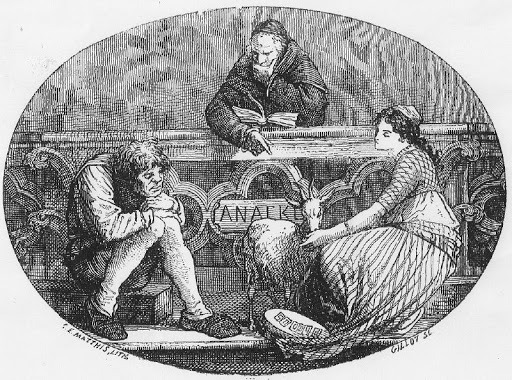
Luc Olivier Merson
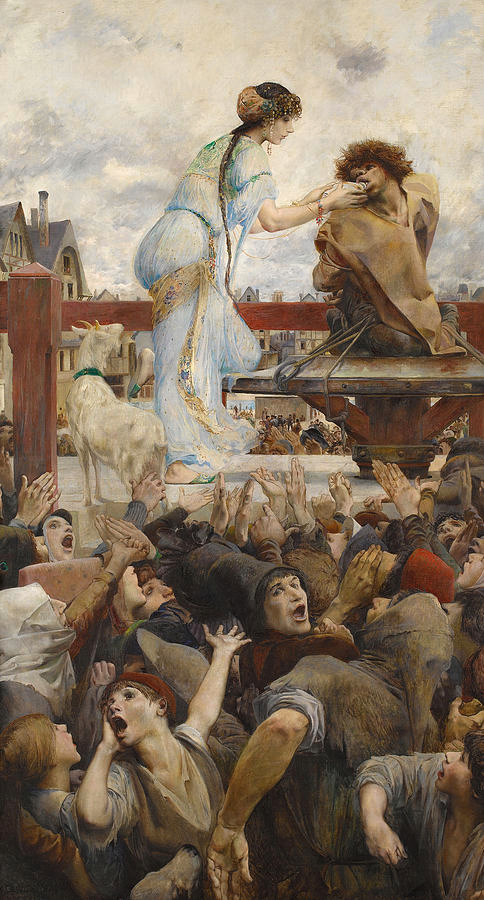
49 notes • Posted 2021-02-27 20:07:51 GMT
#3

On this day, 190 years ago, Victor Hugo’s immortal novel, Notre Dame de Paris, was published by Gosselin, after considerable delay. Almost immediately upon publication, the work was a popular success, capturing the minds of readers and numerous artists, musicians, and dramatists. Indeed, few works have been as admired, adapted, and imitated as this one.
The novel provides a narrative with characters who range from the very royalty of France to the lowliest of outcasts, with the shadow of the cathedral, whose survival is indebted to this book, looming over all.
Hugo writes that his story begins on a day in which history has forgotten, that “the sixth of January, 1482, is not a day that history has preserved any memory.” What a contrast to the sixteenth of March, 1831, in which the world welcomed one of the great literary works of all time.
49 notes • Posted 2021-03-16 15:55:40 GMT
#2

A soundtrack was recently announced for Disney’s The Hunchback of Notre Dame, which will not only include music that was not included as part of the original 1996 soundtrack album, but will also include multiple demos:
Notably, this album will include early versions of Heavens Light (reprise), Topsy Turvy, and A Guy Like You, which have never been released before. There are also two versions of out there, and only one has been made available in the past.
Many of the demos, I suspect, will be identical to the versions that were featured on the 1997 laserdisc edition of the movie.
Disappointingly, some of the songs that were on the laserdisc, such as heavens light, and the abandoned songs for the court of miracles scene, will not be included, and I am unsure as to why.
Still, this is a very exciting announcement, and from the historical perspective, it will always be a good thing to have more content available from the making of the film.
75 notes • Posted 2021-09-09 14:04:10 GMT
#1
The American version of Notre Dame de Paris (1956) is the superior version due to the inclusion of this bizarre scene.
89 notes • Posted 2021-03-05 13:09:34 GMT
Get your Tumblr 2021 Year in Review →
14 notes
·
View notes
Photo
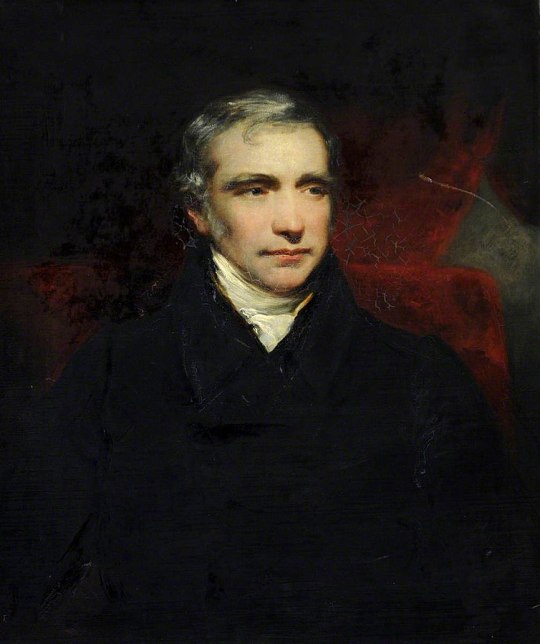
John Jackson - Portrait of James Abercrombie, 1st Baron Dunfermline -
James Abercromby, 1st Baron Dunfermline PC (7 November 1776 – 17 April 1858), was a British barrister and Whig politician. He served as Speaker of the House of Commons between 1835 and 1839.
John Jackson RA (31 May 1778 – 1 June 1831) was a British portraitist.
John Jackson was baptised on 31 May 1778 in Lastingham, Yorkshire, and started his career as an apprentice tailor to his father, also John Jackson, who opposed the artistic ambitions of his son. John Jackson’s mother was Ann Warrener and he had at least one brother, Roger Jackson.
However, John enjoyed the support of Henry Phipps, 1st Earl of Mulgrave (1755–1831), who recommended him to the Earl of Carlisle; as well as that of Sir George Beaumont, 7th Baronet, who offered him residence at his own home and £50 per year. As a result, Jackson was able to attend the Royal Academy Schools, where he befriended David Wilkie and B. R. Haydon. At Castle Howard, residence of the Earl of Carlisle, he could study and copy from a large collection of paintings. His watercolours were judged to be of uncommon quality.
By 1807 Jackson's reputation as a portrait painter had become established, and he made the transition to oils steadily, if not easily, regularly forwarding paintings to Somerset House. After a visit to the Netherlands and Flanders with Edmund Phipps in 1816, he accompanied Sir Francis Chantrey on a trip to Switzerland, Rome, Florence and Venice in 1819. In Rome he was elected to the Academy of St Luke. His portrait of Antonio Canova, painted on this trip, was regarded as outstanding.
Jackson was a prolific portraitist, strongly showing the influence of Sir Thomas Lawrence and Henry Raeburn in his work. His sitters included the Duke of Wellington, the explorer Sir John Franklin and some noted Wesleyan ministers. His 1823 portrait of Lady Dover, wife of George Agar-Ellis, 1st Baron Dover, was widely acclaimed.
He was a Royal Academy student from 9 March 1805, was elected an Associate of the RA on 6 November 1815 and elected a full member on 10 February 1817.
John Jackson was married twice, the first marriage in 1808 was to Maria Frances Fletcher, the daughter of a jeweller, Samuel Fletcher. His second marriage in August 1818 was to Matilda Louisa Ward, the daughter of the painter James Ward and a niece of George Morland. He died in 1831 in St John's Wood, London.
He had three children with his first wife Maria: Maria Rosa Jackson was born in 1808 and died in 1888. His son Charles Fletcher Jackson was born in 1810 and died in infancy in 1811. His second son, John Edmund Jackson was born in 1816 and again died in infancy in March 1817. John Jackson’s first wife Maria also died in March 1817 shortly before their son John Edmund died.
Johns first daughter, Maria Rosa Jackson married Marmaduke Brewer and she later ran a school in Monmouthshire.
Jackson had three confirmed children with Matilda. His first son, Howard William Mansfield Jackson was born in 1824. His second son with Matilda, Mulgrave Phipps Jackson (baptised Phipps Mulgrave) was born on 5 August 1830 and died on 4 October 1913. A painter himself, he exhibited in the Royal Academy for 12 years. John Jackson also had a daughter with Matilda, also called Matilda Louisa born 1825.
There was also possibly a second daughter Ida Augusta Jackson, married Roeneke (27 December 1851, London – 6 January 1874, Florence), buried in the English Cemetery, Florence.[7] This daughter has not yet been confirmed by Ancestry.
4 notes
·
View notes
Photo
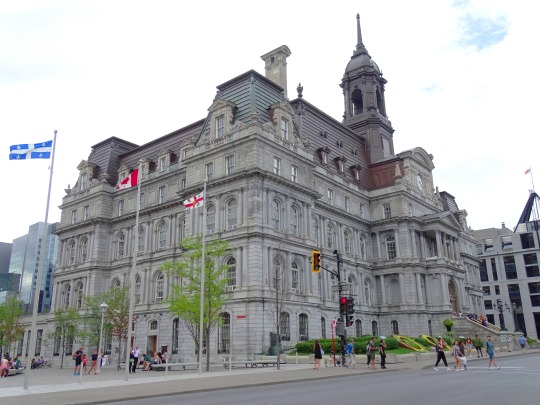
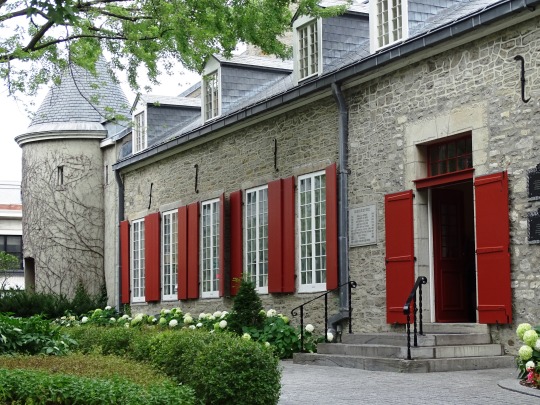

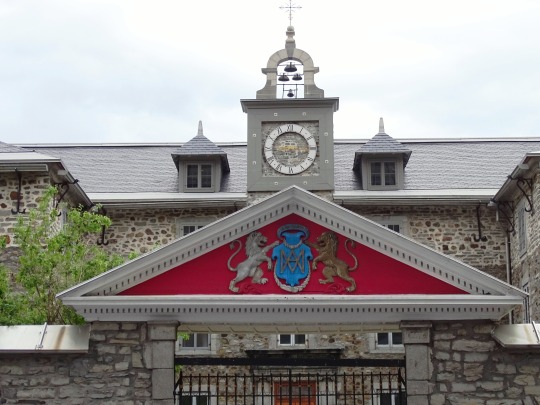




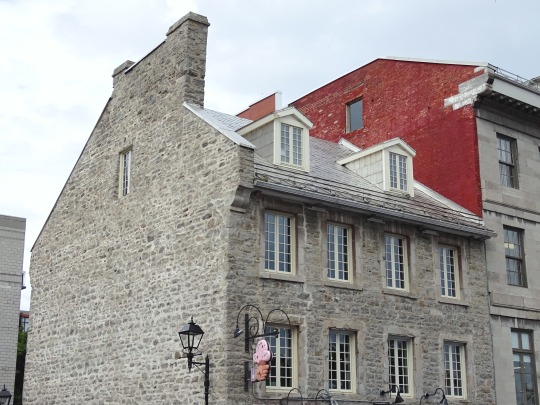

Montréal was incorporated on March 31, 1831.
#Château Ramezay#City Hall#Québec#Canada#summer 2018#2015#travel#original photography#old town#vacation#tourist attraction#landmark#Saint-Sulpice Seminary#Paul Chomedey de Maisonneuve by Louis-Philippe Hébert#Notre-Dame Basilica#Notre-Dame-de-Bon-Secours Chapel#Bonsecours Market#Montréal#incorporated#31 March 1831#anniversary#Canadian history
1 note
·
View note
Text
TMA Statements In Chronological Order
But, not by when the events happened, by the order when the Statements were entered to the Institute. Because that wasn’t on the wiki timeline.
Below the cut because i’m not a monster.
Format is:
Episode // Entity // Statement Giver// Statement Given // Event Date
• #140 The Movment of The Heavens // The Dark // John Flamsteed // 1715
• #116 The Show Must Go On // The Stranger // Abraham Janssen // 2 November 1787
• #23 Schwarzwald // The Eye // Albrecht von Closen // 31st March 1816 // Winter 1815
• #127 Remains to be Seen // The Eye // Jonathan Franshawe // 21 November 1831 // April – November 1831
• #152 A Gravediggers Envy // The Buried // Hezekiah Wakely // 1837 - 1839
• #50 Foundations // The Buried // Sampson Kempthorn // 12th June 1841 // 1836
• #58 Trail Rations // The Flesh // Mrs. Carlisle // 10th November 1845 // October – November 1845
• #105 Total War // The Slaughter, The Eye // Charles Fleming // 1862
• #98 Lights Out // The Dark // Algernon Moss // 14 May 1864
• #138 The Architecture Of Fear // The Eye // Robert Smirke // 13 February 1867
• #7 The Piper // The Slaughter // Clarence Berry // 6th November 1922 // 1917-18
• #133 Dead Horse // The Hunt // Percy Fawcett // 27 June 1930
• #99 Dust to Dust // The Buried // Robert E Geiger // 20 February 1952 // April 1935
• #137 Nemesis // The Slaughter // Wallis Turner // 3 July 1955 // Winter 1942
• #29 Cheating Death // The End // Nathaniel Thorp // 4th June 1972 // 17th June 1775
• #60 Observer Effect // The Eye // Rosa Meyer // 12 July 1972 // April – July 1972
• #95 Absent Without Leave // The Slaughter // Luca Moretti // 2 November 1977
• #44 Tightrope // The Stranger // Yuri Utkin // 2nd March 1979 // November 1952
• #85 Upon the Stair // The Spiral // Unknown // 1980 – 1990
• #86 Tucked In // The Dark // Benjamin Hatendi // 2nd March 1983
• #84 Possessive // The Corruption // Adrian Weiss // 1 December 1990
• #125 Civilian Casualties // The Slaughter // Terrance Simpson // 19 July 1993
• #77 The Kind Mother // The Stranger // Lucy Cooper // 15 September 1994 //August 1994
• #93 Contaminant // The Corruption // Lester Chang // 5 March 1995
• #96 Return To Sender // The Stranger // Alfred Breekon // 15 May 1996
• #53 Crusader // The Eye // Walter Heller // 5th September 1997 // November 1941
• #2 Do Not Open // The Buried, The Stranger // Joshua Gillespie // 22nd November 1998 // 1996 -1998 (?)
• #46 Literary Heights // The Spiral, The Vast // Herbert Knox // 21st December 1998 // September 1997
• #17 Boneturners Tale // The Flesh // Sebastian Adekoya // 10th June 1999 // 1996
• #66 Held in Customs // The Buried // Vincent Yang // 22 February 2000 // January 19 2000
• #78 Distant Cousin // The Stranger, The Web // Lawrence Moore // 12 June 2001
• #21 Freefall // The Vast // Moira Kelly // 20th October 2002 // 3rd-5th or 7th June 2001
• #35 Old Passages // All // Harold Silvana // 4th June 2002 // June 2002
• #9 A Father’s Love // The Dark, The Hunt // Julia Montauk // 3rd December 2002 // 1990-95
• #155 Cost of Living // The End // Tova McHugh // 3 December 2002
• #68 Tale of a Field Hospital // The Corruption // Joesph Russo // 3rd June 2003 // 1st June 2003
• #27 A Sturdy Lock // The Spiral // Paul Mckenzie // 24th August 2003 // July 2003
• #146 Threshold // The Spiral // Marcus Mackenzie // 1 September 2003
• #88 Dig // The Buried // Enrique MacMillian // 4 November 2003
• #70 Book of the Dead // The End // Masato Murray // 9th December 2003
• #52 Exceptional Risk // The Dark // Phillip Brown // 9th April 2004 // 1st November 2002
• #24 Strange Music // The Stranger // Leanne Denikin // 17th Jan 2005 // August 2004
• #59 Recluse // The Web, The Desolation // Ronald Sinclair // 29th November 2005 // Early to Mid 1960’s
• #134 Time of Revelation // The Extinction // Adelard Dekker // 22 January 2006 // 2005, 1867
• #75 A Long Way Down // The Vast // Stephen Walker // 7 November 2006 // Early October 2006
• #139 Chosen // The Desolation // Eugene Vanderstock // 30 November 2006
• #115 Taking Stock // The Flesh // Michaele Salesa // 4 January 2007 // Autumn of 1999
• #8 Burnt Out // The Web, The Desolation, The Spiral // Ivo Lensik // 13th March 2007 // November 2006
• #67 Burning Desire // The Desolation // Jack Barnabas // 18 March 2007 // October – November 2006
• #3 Across the Street // The Stranger, The Web // Amy Patel // 1st July 2007 // 7th April 2006
• #51 High Pressure // The Vast, The Buried // Antonia Hayley // 7th January 2008 // August 2006
• #106 A Matter of Perspective // The Vast, The Eye // Jan Kilbride // 10 February 2008
• #49 The Butchers Window // The Flesh // Gregory Pryor // 11th March 2008 // June 2007
• #62 First Edition // The End, The Eye // Mary Keay // 3rd July 2008 // 1955
• #154 Bloody Mary // The Eye // Eric Delano // 21 July 2008
• #130 Meat // The Flesh // Lucia Wright // 19 December 2008
• #18 The Man Upstairs // The Flesh // Christof Rudenko // 12th December 2008 // 22nd October 2007
• #156 Reflection // The Extinction // Adelard Dekker // 4 January 2009
• #5 Thrown Away // The Flesh etc. // Kieran Woodward // 23rd February 2009 // 8th August 2008
• #97 We All Ignore The Pit // The Buried // Jackson Ellis // 3 March 2009
• #57 Personal Space // The Lonely, The Vast, The Dark // Carter Chilcott // 4 April 2009 // September 2007
• #145 Infectious Doubts // The Desolation // Arthur Nolan // 2 February 2009
• #114 Cracked Foundation // The Web Shtranger or Extinction // Anya Villette // 22 April 2009 // 23 April 2009 or 9 April 2009
• #37 Burnt Offering // The Desolation // Jason North // 6th August 2009 // August 2009
• #108 Monologue // The Lonely, The Stranger // Adonis Biros // 20 August 2009 // August 2009
• #144 Decrypted // The Extinction // Gary Boylan // 3 October 2009 // August 2009
• #126 Sculptor’s Tool // The Spiral // Deborah Madaki // 11 October 2009 // Spring 2004
• #72 Takeaway // The Flesh // Craig Goodall // 20 October 2009 // 27 September 2009
• #107 Third Degree // The Desolation // 1 February 2010 // January 2010
• #48 Lost in the Crowd // The Lonely // Andrea Nunis // 25th March 2010 // September 2009
• #10 Vampire Killer & #56 Children of the Night // The Hunt, the Web // Trevor Herburt // 10th July 2010 // 1959 (first event), Winter 2009
• #69 Thought For the Day // The Web // Darren Harlow // 18th November 2010
• #31 First Hunt // The Hunt // Lawerence Mortimer // 9th December 2010 // 30th November - 1st December 2010
• #33 Boatswain’s Call // The Lonely // Carlita Sloane // 2nd January 2011 // Late November 2010
• #45 Blood Bag // The Corruption // Thomas Neil // 9th February 2011 // Spring 2010
• #148 Extended Surveillance // The Eye // Sunil Maraj // 3 April 2011
• #14 Piece Meal // The Flesh // Lee Rentoul // 29th May 2011 // Early 2011
• #19 Confession & #20 Desecrated Host // The Spiral, The Web, The Desolation (Hilltop Road) & The Spiral, The Flesh // Edwin Burroughs // 30th May 2011 // November 2006
• #112 Thrill of the Chase // The Hunt // Lisa Carmel // 13 November 2011
• #113 Breathing Room // The End // Adelard Dekker // 2012
• #12 Page Turner // The Desolation, The Eye // Lesere Saraki // 11th February 2012 // 23rd December 2011
• #153 Love Bombing // The Corruption, The Flesh // Barbara Mullen-Jones // 2 March 2012
• #110 Creature Feature // The Web // Alexia Crawley // 14 March 2012
• #1 Anglerfish // Stranger //Nathan Watts // 22nd April 2012 // March 2010
• #38 Lost and Found // The Spiral // Andre Ramao // 6th June 2012 // March 2012
• #36 Taken Ill // The Corruption // Nicole Baxter // 19th November 2012 // August – September 2011
• #136 The Puppeteer // The Web // Alison Killala // 1 December 2012 // 2012
• #124 Left Hanging // The Vast // Julian Jennings // 11 December 2012 // 2012
• #149 Concrete Jungle // The Extinction // Judith O’neill // 13 May 2013
• #54 Still Life // The Stranger // Alexander Scaplehorn // 23 June 2013
• #4 Page Turner // The Vast, The Spiral, The End // Dominic Swain // 28th June 2013 // 10th November 2012
• #90 Body Builder // The Flesh // Ross Davenport // 7 August 2013
• #157 Rotten Core // The Extinction, The Corruption // Adelard Dekker // 14 August 2013
• #30 Killing Floor // The Flesh // David Laylow // 1st September 2013 // 12th July 2013
• #129 Submerged // The Buried // Kulbir Shakya // 4 September 2013 // July or August 2013
• #83 Drawing a Blank // The Stranger // Chloe Ashburt // 19 October 2013 // September – October 2013
• #42 Grifter’s Bone // The Slaughter // Jennifer Ling // 3rd November 2013 // Autumn 2013
• #32 Hive // The Corruption // Jane Prentiss // 23rd February 2014 // Pre-2014
• #63 The End of the Tunnel // The Dark // Erin Gallagher-Nelson // 31st March 2014 // 26th March 2014
• #102 Nesting Instinct // The Corruption // Francois Deschamps // 4 June 2014
• #103 Cruelty Free // The Flesh // Dylan Anderson // 2 July 2014
• #135 Dark Matter // The Dark // Manuela Dominguez // 14 July 2014 // 2007
• #87 The Uncanny Valley // The Stranger, The Desolation // Sebastian Skinner // 10 October 2014 // September 2014
• #15 Lost Johns’ Cave // The Buried // Laura Popham // 9th November 2014 // 14-15th June 2014
• #150 Cul-de-sac // The Lonely // Herman Gorgoli // 9 November 2014
• #6 Squirm // The Corruption // Timothy Hodge // 9th December 2014 // 20th November 2014
• #122 Zombie // The Stranger // Lorell St. John // 1 February 2015
• #11 Dreamer // The End // Antonio Blake (Oliver Banks) // 14th March 2015 // 12th March 2015
• #16 Arachnophobia // The Web, The Corruption // Carlos Vittery // 9th April 2015 // Early 2015
• #25 Growing Dark // The Dark // Mark Bilham // 19th April 2015 // January – March 2015
• #64 Burial Rites // The End // Donna Gwynne // 20th May 2015 // 2012
• #74 Fatigue // The Spiral // Lydia Halligan // 8 June 2015
• #123 Web Development // The Web // Angie Santos // 1 August 2015 // January 2015
• #13 Alone // The Lonely // Naomi Herne // 13th January 2016 //30th & 31st March 2015
• #22 Colony // The Corruption // Martin Blackwood // 12th March 2016 // March 2016
• #26 A Distortion // The Spiral, The Corruption // Sasha James // 2nd April 2016 // 1st April 2016
• #28 Skintight // The Slaughter, The Stranger // Melanie King // 17th April 2016 // January 2015
• #34 Anatomy Class // The Stranger // Lionel Elliot // 12th July 2016 // January – March 2016
• #39 Infestation // ATTACK ON THE INSTITUTE // 29th July 2016
• #40 Human Remains // Post Attack Debrief// 29th July 2016
• #41 Too Deep // Buried and Dark suspected // 2nd September 2016 // mid-august – September 2016
• #43 Section 31 // The Desolation, The End // Basira Hussain //19th September 2016 // August 2011 and 18 July 2014
• #47 The New Door // The Spiral // Helen Richardson // 2nd October 2016
• #55 Pest Control // The Corruption, The Desolation // Jordan Kennedy // 3rd November 2016 // 2011 & 2014
• #61 Hard Shoulder // The Hunt, The Stranger, The Buried // Daisy Tonner // 1st December 2016 // 24th July 2002
• #65 Binary // The Spiral, Extinction // Tessa Winters // 7th January 2017
• #71 Underground // The Buried // Karolina Gorka // 25 January 2017 // 6 January 2017
• #73 Police Lights // The Dark // Basira Hussain // 11 February 2017 // 10 February 2017
• #76 The Smell of Blood // The Slaughter // Melanie King // 13 February 2017
• #79 Hide and Seek // The Stranger, The Spiral // 16 February 2017
• #80 The Librarian // All // Jurgen Leitner // 16 February 2017 // 1994
• #81 A Guest for Mister Spider // The Web // Jonathan Sims // 18 February 2017 / 1995
• #82 The Eyewitnesses // The Eye, the Slaughter // Daisy Tonner // 18 February 2017
• #89 Twice as Bright // The Desolation // Jude Perry // 24 April 2017
• #91 The Coming Storm // The Vast, The Spiral // Michael Crew // 28 April 2017
• #92 Nothing Beside Remains // The Eye, The Lonely // Elias Bouchard, Barnabas Bennett // ? [Possibly 28 April 2017]
• #94 Dead Woman Walking // The End // Georgie Barker // 29 April 2017
• #100 I Guess You Had To Be There // The Desolation, The Dark, The Spiral, The Web, The Lonely // Lynn Hammond, John Smith, Robin Lennox, Brian Finlinson // 2 May 2017 – 26 May 2017
• #101 Another Twist // The Spiral, The Stranger // Michael // May-June 2017 // October 2009 – 2011
• #104 Sneak Preview // The Stranger // Timothy Stoker // 14 June 2017 // August 2013
• #109 Nightfall // The Dark, The Hunt // Julia Montauk and Trevor Herbert // 29 June 2017 // July 2010
• #111 Family Business // Multiple, The End // Gerry Keay // 30 June 2017 // September 2008
• #117 Testament // The Eye // Jonathan Sims, Basira Hussain, Melanie King, Martin Blackwood, Timothy Stoker, Daisy Tonner // 2 – 4 August 2017
• #118 The Masquerade // The Stranger // The Unknowing Begins // 6 August 2017
• #119 Stranger and Stranger // The Stranger // The Unknowing Ends // 7 August 2017
• #120 Eye Contact // The Eye // Elias Bouchard // 9 August 2017
• #121 Far Away // The End, The Web // Oliver Banks // 15 February 2018
• #128 Heavy Goods // The Stranger // Breekon // 3 March 2018
• #131 Flesh // The Flesh // Jared Hopworth // 20 March 2018 // 2016 – January 2018
• #132 Entombed // The Buried // Jonathan Sims and Daisy Tonner // 24 March 2018
• #141 Doomed Voyage // The Vast, The Spiral // Floyd Matharu // 11 June 2018
• #142 Scrutiny // The Eye, The Buried // Jess Terrell // 12 June 2018
• #143 Heart of Darkness // The Dark // Manuela Dominguez // 16 June 2018
• #147 Weaver // The Web // Annabelle Cane // 20 July 2018
• #151 Big Picture // The Vast, The Lonely, The Extinction // Simon Fairchild, Martin Blackwood // 14 August 2018
• #158 Panopticon // The Eye, the Extinction, The Lonely // Martin Blackwood, Peter Lukas, Basira Hussain, Jonathan Sims, Daisy Tonner, Elias Bouchard, Gertrude Robinson // 25 September 2018
• #159 The Last // The Lonely // Peter Lukas // 25 September 2018
• #160 The Eye Opens // All // Jonah Magnus, Jonathan Sims // 18 October 2018
• Vigilo, Audio, Supervenio. The World Ends
• #161 Dwelling // No // Sasha James, Tim Stoker, Martin Blackwood, Elias Bouchard, Jonathan Sims, Jurgen Leitner // No Longer Applicable // Unknown
• #162 A Cozy Cabin // No // Gertrude Robinson, Gerry Keay, Sasha James, Timothy Stoker, Martin Blackwood, Jonathan Sims // No Longer Applicable // 2013 – 2015
• #163 In The Trenches // The Slaughter // Jonathan Sims // No Longer Applicable
• # 164 The Sick Village // The Corruption // Jonathan Sims // No Longer Applicable
• #165 Revolutions // The Stranger // Jonathan Sims // No Longer Applicable
• #166 The Worms // The Buried // Jonathan Sims // No Longer Applicable
• #167 Curiosity // The Eye, The Web, Others // Jonathan on Gertrude Robinson // No Longer Applicable
• #168 Roots // The End // Oliver Banks // No Longer Applicable
184 notes
·
View notes
Text

Countess Zofia Zamoyska, née Potocka - Polish noblewoman
''That the relations between man and woman are very different in Poland and in France is quickly perceived in daily conversation. While the tone among Frenchmen, whenever conversation turns on women, is always extremely free, sometimes to a foreigner repulsive, and generally lascivious, the Poles as a rule in discussing women manifest warmth, often tenderness or indulgence, but, so far as I could judge, seldom frivolity.
In Poland's great uprisings they have been known to enter into conspiracies, to do military duty, and frequently enough of their own free will to accompany their loved ones to Siberia. Mickiewicz's Grażyna, who led an army on horseback, has had successors in this century. Celebrated above all others is Emilia Plater, a young lady of one of the first families of Poland, who in 1830 induced a whole district to rise in rebellion, took part in several battles, and at last, having joined the detachments under Dembinski which refused to take refuge on Prussian soil, attempted to cut her way with her corps through the hostile army, but in December, 1831, died of want and over-exertion at the age of 26, in the hut of a forester. Mickiewicz's, beautiful poem, The Colonel's Death, celebrated her memory. During the rebellion of 1830-31 there was not a battalion nor a squadron of the Polish army in which there were not female combatants; after a battle or a march the soldiers always arranged a bivouac for the women, just as they took care that no word was spoken which could offend their ears.
The education of the young girls, moreover, is conducted in much the same way as in France—they are never left a moment unprotected—and marriages are made in the same manner as there; the contracting parties seldom know much of each other before the wedding, and generally see each other for the first time a few weeks before.''
IMPRESSIONS OF POLAND, Georg Brandes,1885
#georg brandes#Poland#polish culture#polish women#France#emilia plater#polish nobility#zofia zamoyska#women in history#*#history#girls#europe#november uprising#aristocracy#slavic#countess
40 notes
·
View notes
Photo

Charlotte Canning, Countess Canning (née Stuart; 31 March 1817 – 18 November 1861) was a British artist and the first vicereine of India. She was one of India's most prolific women artists – two portfolios in the Victoria and Albert Museum contain some 350 watercolours by her, the result of four major tours in the country. Her husband was Charles Canning, who served as Governor-General of India from 1856 to 1858 and then as Viceroy of India until 1862.
As the elder daughter of the British ambassador to France, she was born and raised in Paris. She moved to England with her family in 1831, marrying Canning four years later. From 1842 to 1855, Lady Canning served as a Lady of the Bedchamber to Queen Victoria and was a favourite of the monarch. She moved to Calcutta in 1856 upon her husband's appointment, and two years later she became India's first vicereine when the country fell under control of the British Crown.
As an artist and botanist Lady Canning collected flowers and plants during her frequent trips around India, while drawing the natural scenes around her. She became ill shortly before her scheduled return to England, and died of malaria in Calcutta. Her death was widely reported in England, where she was exemplified as a symbol of feminine virtue in the Victorian era. A type of Indian dessert, ledikeni, is named after her.
3 notes
·
View notes
Photo


March 12, 1856
While thumbing through the family bible, I found a family register page that hadn’t been filled in. I filled it in as best I could with the family’s history that I know. I did forget myself because Hiram is my brother and I didn’t notate that. I would have liked to have added my birthday, Oct. 31, 1831, or Hiram’s birth year, 1817, but that wouldn’t have been relevant to the Waldrop’s history.
(The text of the page below)
Benjamin Samuel Waldrop married Maria Louisa Johnson - abt 1830
Thomas Garland born December 7, 1834
Nancy Quarles born 1838
Thomas G. married Sarah Mildred Saunders - October 9, 1854
Nannie Q. married Hiram Bolling Saunders (brother) - Dec. 18, 1855
4 notes
·
View notes
Text
subfluence merged in an ornamental lake
but these very subfluences 1
subfluence over boundaries or lands 2
subfluence which natural causes have on the limity of the reflection 3
subfluence, recording occurrences 4
subfluence over ennui. I had not the 5
subfluence. What do we do? What does the 6
subfluence, discoverable or unexplained 7
subfluence, at nights 8
subfluence in production or waste, used freely 9
subfluence literally incalculable, the principle on which 10
the heart-beat is subfluence. 11
subfluence diffused 12
subfluence full of romance 13
lies, and other caustic or irritant subfluence 14
subfluence, the signaling, the adjustment of huge mechanisms 15
subfluence merged in an ornamental lake 16
subfluences subdued 17
his special subfluence,
for he was an omnivorous reader, and had a picturesque and even romantic outlook on 18
subfluence, with the colors still 19
subfluence the entire cotton trade 20
subfluence spread far and wide. 21
subfluence, the possibility of human flight 22
subfluence for lack of language : error 23
Subfluenz-Prozesse 24
Subfluenz, einer varistischen 25
sources (most, and mostly OCR misreads)
1
OCR misread for “substances,”
at “Of points wherein we and Papists differ, viz., Transubstantiation, &c.,” in John Rawlet (1642-86 *), A dialogue betwixt two Protestants, in answer to a Popish Catechism (Third edition, corrected; London, 1686) : 82
2
ex “A sketch of the life and public services of Gen. William Henry Harrison.” in (Isaac Rand Jackson?), General William Henry Harrison, Candidate of the People for President of the United States (Baltimore, 1840) : 6
Harrison (1773-1841) would have a short (31-day) tenure as president, but had done enough damage in previous roles, particularly with regard to indigenous people.
see wikipedia
3
ex “Scripture and Geology” (by N), in The Mirror of Literature, Amusement, and Instruction (Saturday, August 14, 1841) : 99-103 (100)
see wikipedia for its publisher John Limbird (1796?-1883)
4
ex “Druids and Bards,” being an extensive notice/review of three books — J. B. Pratt The Druids Illustrated (1861), John Williams, ed., Brut y Tywysogion (1860), and Godfrey Higgins, The Celtic Druids (1829), in The Edinburgh Review, 118 (American Edition; July 1863) : 20-36 (35)
5
ex “A Rolling Stone.” By George Sand, translated from the French by Carroll Owen, in Library of Famous Fiction 2 (1879) : 1-113 (109)
6
OCR cross-colum misread, involving M. H. Cobb, “Common Sense Applied to Living” (pp 5-7) and “A Parlor Drama, in Two Acts” by Augusta De Bubna (pp 7-13), in The Brooklyn New Monthly Magazine, Henry Morford (1823-81), editor and manager; 1:1 (January 1880) : 7
7
ex A. Ernest Sansom, “The Dyspepsia of Infancy,” in The New York Medical Times 19:2 (May 1891) : 33-37 (34)
8
involving obituaries (memorials) for James Holmes and David Wright, in the section “Connexional Biography” in The Primitive Methodist Magazine 73 - London, 1892) : 51
on “Connexionalism” (and its relation to “network”), this, from wikpedia —
“The United Methodist Church defines connection as the principle that ‘all leaders and congregations are connected in a network of loyalties and commitments that support, yet supersede, local concerns.’ Accordingly, the primary decision-making bodies in Methodism are conferences, which serve to gather together representatives of various levels of church hierarchy.”
9
ex “Brief Gleanings : The treatment of Leanness and Obesity” in The Medical Brief (A Monthly Journal of Scientific Medicine; J.J. Lawrence, Proprietor) 20:10 (St. Louis, Mo; October 1892) : 1240
10
ex W. Garden Blaikie, “St. Paul’s Pastoral Counsels to the Corinthians.” in Exegetical and Expository Section, The Homiletic Review 29:5 (May 1895) : 451-453
11
Aloysius O. J. Kelly, “Essential Paroxysmal Tachycardia — Report of Four Cases.” (Read October 14, 1896), in Proceedings of the Philadelphia County Medical Society 17 (Session of 1896) : 166-180 (171)
Kelly (1870-1911) obituary at Boston Medical and Surgical Journal (now NEJM) March 9, 2011) : 360
12
out of chronology (and unlinkable snippet, only), mea culpa, ex The Evangelical Magazine and Missionary Chronicle 21 (1813) : 328
13
snippet only, evidently from Chapter 9 “Signs and Tokens” of Charles Dickens, Bleak House (1852-53), here ex Works Volume 3 (1899) : 374
14
misread involving “Milk a Universal Antidote” and “School-Meals for Underfed Children” in The Dietetic and Hygienic Gazette (A monthly journal of physiological medicine) 16:1 (January 1900) : 20
15
ex Edward Nelson, “Electricity in Service on British Battleships,” in Electricity 29:23 (December 6, 1905) : 311-313
16
preview snippet only, at (Commonwealth of Australia) Parliamentary Debates 57 (1910) : 3207
17
ex index of volume, Proceedings of the American Society for Psychical Research (Section “B” of the American Institute for Scientific Research) vol. 5 (New York, 1911) : 771
18
ex entry (by “C. L. G.”) for Meredith White Townsend (1831-1911), in Dictionary of National Biography, edited by Sidney Lee. Second Supplement vol. 3, Neil – Young (New York, 1912) : 532
19
preview snippet only, ex The American Year Book 5 (1915) : 300
20
§ 816. Corners... in William Herbert Page, The Law of Contracts Second edition; revised, rewritten and enlarged with forms. Volume 2. (Cincinnati, 1920) : 1441
21
ex “Balboa Day, September 17th, 1919 in Honolulu,” in Bulletin of the Pan-Pacific Union (January 1920) : 6
22
misread, involving report on “The Langley Flying Machine” (and some controversy between S. P. Langley and the Wright brothers), and “The Impurity of Pure Substances” (review of A. Smits, Theorie der Allotropie (1921)) in Nature 108 (November 3, 1921) : 298
23
misread, involving Booth et al v. Floyd (No 2358) and Blackstone v. Nelson, Warden (No 2457) in The Southeastern Reporter 108 (August 27 - December 3, 1921) : 114
24
H. J. Behr, “Subfluenz-Prozesse im Grundgebirgs-Stockwerk Mitteleuropas.” Zeitschrift der Deutschen Geologischen Gesellschaft 129 (1978) : 283-318
25
K. Weber, “Das Bewegungsbild im Rhenoherzynikum Abbild einer varistischen Subfluenz.” Zeitschrift der Deutschen Geologischen Gesellschaft 129 (1978) : 249-281
referring to the Variscan Orogeny (wikipedia)
method
1
There is no word “subfluence,” or only barely one.
This started with the self-written biographical note of poet Jack Hirschman, in A Caterpillar Anthology (Clayton Eshleman, ed., 1971) —
“They are lyrical poems, in verse or free-form, as distinguished from the poems in this anthology, which are breath forms reflecting a more total slavery to the conditions of the spirit’s war-torn years. The major influences on my works are influence itself, in as many levels of order, disorder, disaster, paranoia, joy and ecstasy as the deathless magic of being alive permits a vessel now of fire, now of air, to spark, glow, flame and ember according to the law of nature.”
“Influence” — that word — led to thinking about variations, e.g., effluence, outfluence, pre-fluence... “subfluence” —
an underground stream
a less-than fluency (stammering, stuttering)
a brittleness?
Little — or nothing — surfaced in a google books search, save for errors — typically a “sub” at the end of one line, a “fluence” at the start of the next (in a different column). Quite enough for present purposes. And so these subfluence derivations are built around a word that isn’t quite a word. Some license has been taken with the text in this post: dispensing ellipsis or [brackets] where text is erased (or rather, dropped); in some instances, some words that preceded the subfluence, are moved to follow it.
2
And yet, the word does appear, in some (and only a few) geological texts, typically having to do with the geotectonic unterströmungshypothese (undercurrent) concepts — and field work done in the Northern Calcareous Alps — of and by Otto Ampferer (1875-1947). More on Ampferer to come. For now, these references —
Wolf-Christian Dullo and Fritz A. Pfaffle, “The theory of undercurrent from the Austrian alpine geologist Otto Ampferer (1875-1947) : first conceptual ideas on the way to plate tectonics,” Canadian Journal of Earth Sciences 56 (2019) : 1095-11
here
Karl Krainer und Christoph Hauser, “Otto Ampferer (1875–1947): Pioneer in Geology, Mountain Climber, Collector and Draftsman,” in: Geo.Alp Sonderband 1 (2007) : 91–100
here (pdf)
wikipedia (in German)
Dr. Otto Ampferer. “Über das Bewegungsbild von Faltengebirgen” (On the movement pattern of folded mountains), in Jahr. Geol. Reichsanstalt (Yearbook of the Austrian Geological Survey), 56:3-4 (1906) : 539-622
“Mit 42 Zinkotypien im Text”
here
3
“Subfluence” also surfaces as a company name, social media handle, &c., &c.
—
all tagged subfluence
5 notes
·
View notes
Text
London Singularity takes place in 1888. If someone were to say, expand the other Singularities into that era (or just to place other Fate based stories then), which Heroic Spirits could you reasonably have appear as a living Human who might be able to assist or summon a Servant?
Historical Characters:
Florence Nightingale (12 May 1820 – 13 August 1910) [Age: 68]
Geronimo (Mescalero-Chiricahua: Goyaałé Athabaskan pronunciation: [kòjàːɬɛ́] "the one who yawns", June 16, 1829 – February 17, 1909) [Age: 59]
Helena Petrovna Blavatsky (12 August [O.S. 31 July] 1831–8 May 1891) [Age: 57]
Saitō Hajime (February 18, 1844 – September 28, 1915) [Age: 44]
Thomas Alva Edison (February 11, 1847 – October 18, 1931) [Age: 41]
Vincent Willem van Gogh (30 March 1853 – 29 July 1890) [Age: 35]
Nikola Tesla (10 July 1856 – 7 January 1943) [Age: 32]
Li Shuwen (1864–1934) [Age: 24]
Margaretha Geertruida Zelle (7 August 1876 – 15 October 1917) [Age: 12]
*Jack the Ripper (the first murders happened in 1888)
Fictional Characters:
Dr. Jekyll (Novella was published in 1886, but you can just follow the timeline of the original Singularity)
Sherlock Holmes (born in 1854, and “His Last Bow” is set in 1914)
James Moriarity (in canon he died in 1891)
Captain Nemo (His canon stories tend to take place in the 1860′s, but there’s precedent with “League of Extraordinary Gentlemen” having him live past 1888.)
Fran (Either do it like London did and have her in stasis, or just do the common story element of her just not dying and traveling around exploring the world.)
Interesting Notes: I added Jack the Ripper to the list because 1888 is when the Whitechapel Murders happened, although any appearance probably needs to ignore the Fate versions of Jack. Someone who fits the bill was alive. By definition, a Jack the Ripper would need to be alive at this point.
For fun I included Margaretha Geertruida Zelle (later known as Mata Hari). She’s probably not participating in any Holy Grail War or events, but it would be interesting if you want a 12 year old Master.
She didn’t quite make it to 1888, but Katsushika Ōi (c. 1800 – c. 1866) was relatively contemporary. Her date of death is marked as unknown, but I think that just refers to month and day, not the year being in dispute. If you want to get a little crazy though, there’s a quote from someone who knew who her implied, “”she had ambitions to become a female xian sage.” So, who’s to say she didn’t succeed in doing so and gaining immortality or reversing her aging?
This is mostly just something fun to consider. Dr. Jekyll summons Mordred like in London (although as a proper Master/Servant relationship). Florence Nightingale summons Asclepius to a battlefield. Saito Hajime summons Miyamoto Musashi to keep the peace in the Meji Era. Geronimo summons Abigail Williams... Lots of interesting potential here.
6 notes
·
View notes
Text
The Events of the Merthyr Rising (1): 31 May - 2 June 1831
Gwyn A. Williams stated that with the beginning of the Merthyr Rising ‘the prehistory of the Welsh working class comes to an end. It’s history begins.’
31 May 1831
Lewis Lewis was a miner at the coal mines associated with the Penydarren ironworks. He was also know as Lewsyn yr Heliwr (Lewis the Hunter). From here on I shall refer to him as either Lewis or Lewsyn yr Heliwr. Like many other at Merthyr, Lewis has built up some debts which were to be collected by the bailiffs associated with the Court of Requests. However, Lewis and his neighbours were not willing to cooperate, refusing to allow the bailiffs to enter his home and take any of the goods he possessed. The Magistrate for Methyr, J. B. Brice was called to intervene. Eventually Lewis gave up a trunk as payment for his debts.
1 June 1831
A crowd gathered, marching through Merthyr calling for bread and cheese to be given to them. Bread and cheese would prove to be a catchy slogan to the rioters as the situation escalated over the coming days. They continued on to the ironworks of Rowland Fotherfill at Aberdare. Aberdare is just south of Merthyr. There the crowd demanded that wages be maintained.
Meanwhile at Hirawun, to the west of Merthyr, a second disturbance was occurring. Needless to say, Lewis was not too pleased about his trunk being taken as payment and he wanted his property back. A crowd gathered and led by Lewis marched to the house of a shopkeeper and taking the trunk back. Their next destination, Merthyr.

Above is a map of the area showing where Aderdare and Hirwaun are in relation to Merthyr Tydfil.
The crowd led by Lewis marched on to Merthyr. Along the way they decided to follow Lewis lead, attacking the homes of those who had claimed their confiscated property. Many of these homes would have belonged to shopkeepers, the goods seized being their payments of debts. As usually happens with many riots and rebellions, the first singled out are the middle men, the people seen to be the problem in the immediate circumstance rather than the people who call the shots and make this all happen.
They marched on to the house of Thomas Williams, a bailiff who collected debts on behalf of the shopkeepers and the Court of Requests. However, when his wife refused to give certain items to the crows, they ransacked the house entirely.
After the looting, the crowd marched on to the Court of Requests and attacked it and the officials within.
2 June 1831
The crowd that had marched to Merthyr had swelled with the workers from Cyfathfa and Hirwaun and set up outside Castle Inn. David J. V. Jones notes that like the food riots of the eighteenth century there were many women present and they were very vocal. In fact riots such as these are often made up of women, boys and young workers with older, more skilled workers or even middle class men acting as their leaders. Here the puddlers who had been sacked just before the rising began became their leaders. The area surronding Castle Inn was where many of the tradesmen of Merthyr lived. They were particularly centred around the house of Thomas Lewis, one of Merthyr’s hated moneylenders. He was responsible for getting many people into hard times. They forced him to sign a promise to return goods that had been seized.
By this time the crowd has created quite a stir, news spreading fast of the reclaiming of property. The Ironmasters began to realise the intensity of the situation and set up their headquarters and Castle Inn in order to plan and coordinate their response. This forced the local magistrate, J. B. Bruce out to try to diffuse the situation. As when it had started with Lewis reclaiming his property, this was a riot against the much hated Court of Requests. He tried to restore order, defending the works of the Court of Requests. But, of course, the crowd were not buying it. The first port of action was to enrol about 70 Special Constables. These were found amongst the ranks of the tradespeople, the middle men that the crowd had already turned their anger and resentment towards. They were a kind of voluntary police presence, like the special constables today, whose services were employed to keep the peace. While the Metropolitan Police Force had been established by Robert Peel in London, there was no formal police service like it nationally until later in the century. Instead, when unrest occurred military services were utilised. So Bruce sent word to the military authorities in Brecon to prepare their troops in case the situation escalated. This lack of a police force was coupled with a seemingly easy nation in which to keep the peace. Wales was very sparsely populated, with small settlements. The job of keeping the peace was given to the Justices of the Peace (JPS). However, this, much like the political system, was broken. It was built for a rural society which was quickly beginning to be in the days of the past. Places like Merthyr where the population was far more concentrated became far more difficult to police requiring the assistance of military services when the situation got out of hand.
However, Brecon isn’t exactly that close to Merthyr if an emergence situation broke out. Even today, Wales isn’t the most easily traversed nation, especially when concerning the more rural area. At this time there were no railways and an even poorer series of roads connecting Welsh towns and villages. Brecon is situated in the Brecon Beacons a series of hills that would have to be navigated in order to reach Merthyr. Below is a map of the areas, Merthyr situated at the bottom of the expanse of green which is the Beacons and Brecon almost near the top.

This was not the only time issue in their way. The military would be brought in my the JP contacting the Home Secretary by letter who would then, if they approved the request, would pass it on to the Secretary of State for War at the War Office. They would then issue a command to the officer in charge of the nearest garrison when the troops would then be dispatched to help dealt with a riot that had gotten out of hand.
The crowd still did not disperse. Instead the Riot Act had to be read by Anthony Hill the Ironmaster of Plymouth works, in both English and Welsh to ensure that everyone gathered knew and understood what the ramifications of their actions would be. The Riot Act was a piece of legislation that would be read out where a large crowd was “unlawfully, riotously, and tumultuously assembled together” as the words of the act itself says. Officially this was in English, but the act would be translated into Welsh when read if necessary. This was read to inform people that they had a hour to disperse. After an hour, if there were still twelve people there then they were guilty of a capital offence. Strangely enough, only three people needed to be gathered together in order for it to be classed as a riot, but did not carry a death sentence unless there were twelve that remained after the Riot Act was read.
Pictured below is a portion of the riot act, including what would have been read to disperse a gathering.

Nevertheless, the crowd did not disperse. Instead they attacked the house of Thomas Lewis, the moneylender and drove the magistrate away.
The crowd only continued to grow and began to focus o the house of Joseph Coffin, the President of the Court of Requests. They demanded all the books of the court which they burned in the streets. This destroyed the evidence that they had debts to be paid or that their property had been taken in order to pay a debt. It was very reminiscent of the prelude to the French Revolution where the chateaux and records within them were destroyed during the Great Fear. With the fall of Charles X in France happen only the year before, tensions and anxieties were high amongst the ruling class of Britain. There was very little to say that the same could not happen here.
At the same time many workers marched around the ironworks persuading more of them to join their cause and strike. J. B. Bruce saw there was little to be done and the military could not just be on standby anymore. Rather they were necessary to restore order. 52 soldiers from the Royal Glamorgan Light Infantry were dispatched from Cardiff and a detachment of the 93rd Highlanders from Brecon were also sent.
Tomorrow, things would escalate far beyond what the authorities feared.
#merthyr#merthyr tydfil#merthyr rising#19th century#wales#welsh history#british history#political history#social history
12 notes
·
View notes
Photo

Charlotte Brontë (/ˈbrɒnti/, commonly /-teɪ/;[1] 21 April 1816 – 31 March 1855) was an English novelist and poet, the eldest of the three Brontë sisters who survived into adulthood and whose novels became classics of English literature. She enlisted in school at Roe Head in January 1831, aged 14 years. She left the year after to teach her sisters, Emily and Anne, at home, returning in 1835 as a governess. In 1839 she undertook the role as governess for the Sidgwick family but left after a few months to return to Haworth where the sisters opened a school, but failed to attract pupils. Instead, they turned to writing and they each first published in 1846 under the pseudonyms of Currer, Ellis and Acton Bell. While her first novel, The Professor, was rejected by publishers, her second novel, Jane Eyre, was published in 1847. The sisters admitted to their Bell pseudonyms in 1848, and by the following year were celebrated in London literary circles.
51 notes
·
View notes